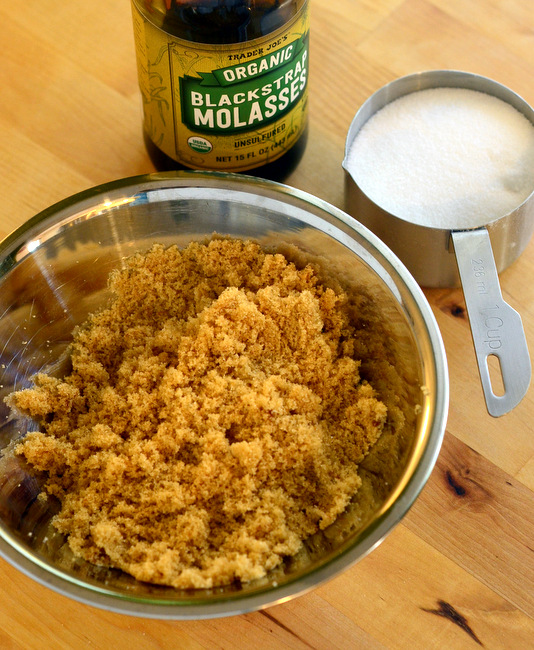
Brown sugar is a staple ingredient in my pantry, but there are times when I find myself running out of it and needing a replacement in a pinch. Usually, I would zip over to the store and buy some brown sugar, but you can also make brown sugar easily at home. This basic recipe will produce a brown sugar that is similar in color and flavor to the “golden brown” brown sugar that you can buy at most grocery stores, a great all purpose brown sugar that can be used in any recipe.
How to Make Homemade Brown Sugar
Combine 1 cup of white sugar with 1 tablespoon of molasses. Mix until completely combined and uniform in color.
You can mix the molasses in by using a fork or, believe it or not, by using your fingers to “rub” the molasses in the exact same way you might rub butter into a pie crust. That said, the process goes much more quickly if you combine everything in a food processor and whizz it a few times. I only pull out my food processor if I’m doing a large batch, however, and generally mix it by hand if I need a small amount.
For a lighter flavor, simply cut back the molasses to 2 teaspoons. If you want a stronger molasses flavor for a “dark brown” brown sugar, increase the molasses by 2-3 teaspoons.
Homemade brown sugar can be substituted for store-bought brown sugar in baking recipes. The texture and flavor will be almost exactly like store-bought brown sugar. The brown sugar should be packed in a measuring cup when measuring it out, just like store-bought brown sugar. You will also need to store it in an airtight container for it to maintain its soft, moist texture (see also: How to Keep Brown Sugar Soft). A ziploc bag is a great airtight option for any brown sugar (homemade or store-bought), but a tupperware-type container with an airtight lid is a good choice, too.
The post How to Make Homemade Brown Sugar appeared first on Baking Bites.